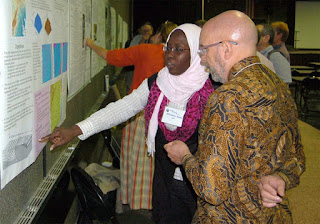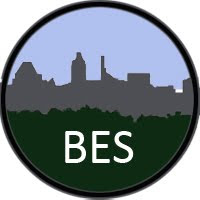Urban Ecology Takes a Long Time
We are extraordinarily fortunate in Baltimore to have long-term support for our urban social-ecological research and engagement. BES is funded in 6 year increments, subject to review and approval by the National Science Foundation’s rigorous peer driven process. It is very likely that our ability to contribute substantially to the consolidation and progress of modern American urban ecological science is a result of the long-term funding we have had since 1997. But what is it about longevity that pays off so greatly in an academic and practical program?
Most obviously, given the participation of BES in the Long-Term Ecological Research (LTER) network supported by the US National Science Foundation, the big value is contributing data sets on long-lasting social and ecological processes and patterns. Many biophysical processes can take long times to play out. Change in the composition and structure of vegetation in yards, on streets, and in parks, the development of urban soils, the invasion or extirpation of animal populations, the periodic occurrence of physical disturbances or extreme climatic events, for example, all take long times to observe. Historical data and simulation modeling can extend the understanding of these slow, episodic processes, of course, and these methods are commonly used in our and other LTER projects. But another kind of process is both common in urban systems, and takes a long time to occur: Complex events, those that involve multiple causes which occur at different time and spatial scales; those whose interactions are not constant or instantaneous, but rather are lagged or sometimes indirect; and those which reflect rare or unique social or biophysical triggers. It takes long-term data records to expose all these kinds of changes. And urban systems are full of these kinds of changes.
There are less obvious reasons to rely on long-term research and engagement, however. The most important of these is the long time it takes to build social relationships of trust. This phenomenon characterizes the working relationships within the scientific research team, and the relationships of the members of the research program with an incredible array of people and institutions in the region. BES as a program and as a collection of individuals requires the trust of residents of communities where we work and install instrumentation, community groups, non-governmental organizations, and government agencies at city, state, and federal levels. The list of groups in each of these categories is immense. For example, just to name some of the agencies in the city of Baltimore, we work with the school system, the Office of Sustainability, and the departments of Public Works, Planning, Recreation and Parks, Health, and Housing, among others. Other counties in the metropolitan region, plus state agencies are equally numerous. It takes time to build trust between our researchers and educators and all these various constituencies. Demonstrating good will, a learning attitude, the appropriate level of accountability and responsiveness, and just plain old politeness, are among the cultural attributes that must be built and maintained over time. Such building rests on a growing number of interactions, and is always vulnerable to missteps and gaffes. So sometimes there is also the time required for making amends. Culture is, in other words, a long-term phenomenon.
 |
|
| Alimatou Seck’s (L) research has helped local water managers. |
Part of the outward-facing value of longevity is the ability to provide information, insights, and support for the local constituencies. It takes a long time to absorb the needs of communities and other constituencies, and to develop, analyze, and interpret data sets that address those needs. Continued dialog, with a healthy respect for listening, is the mechanism supporting the growth of this kind of long-term social capital.
Within the project, we have discovered that it takes a long time to build, reinforce, and refine the relationships among members representing different academic disciplines, different career stages, different degrees of theoretical versus practical motivation, and the like. Underlying many of these kinds of long-term growth is an appreciation of the different terminologies, theoretical structures, and research methodologies that different groups employ. Bridging this variety of gaps is made difficult by the fact that often the same words are used to represent different practical motivations, and different (but rarely states) theoretical assumptions and mental models. Besides goodwill among disciplines, it simply takes a long time to become aware of the gaps and to jointly construct conceptual and practical bridges across them. I have sometimes been surprised to discover that I, as a biophysical researcher, was using the same term as some social scientists were, but using it in a very different way. Productive surprise and recovery from surprise take time.
So the long-term aspect of our project is very rich. It resides in the fundamentally long-lasting processes of social-ecological change and interaction; the growth of trust and social capital as participants in the Baltimore social-ecological system, and the blossoming of mutual understanding within an amazingly diverse community of scholars, researchers, and educators. Urban ecology just takes a long time.



